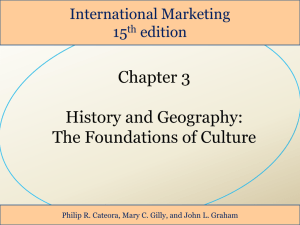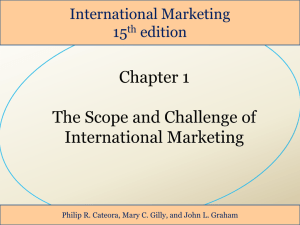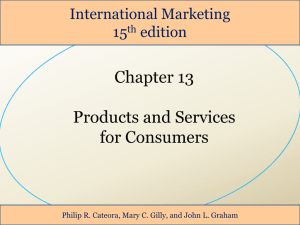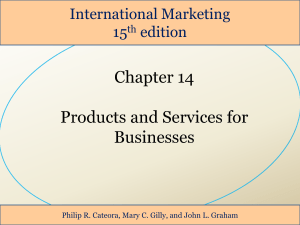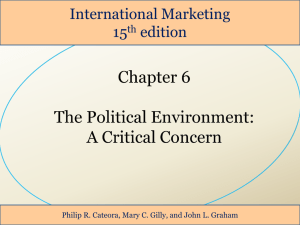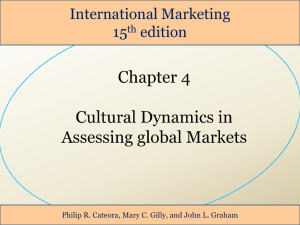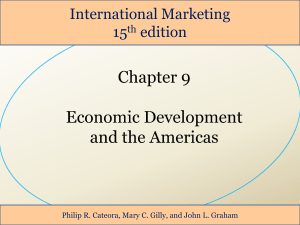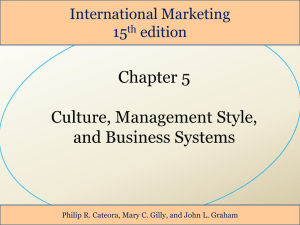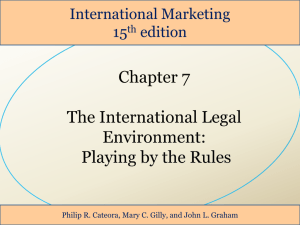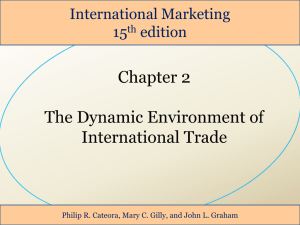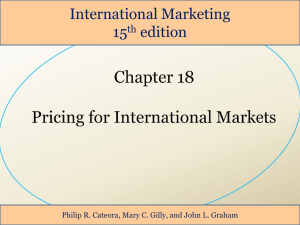International Planning Process
advertisement
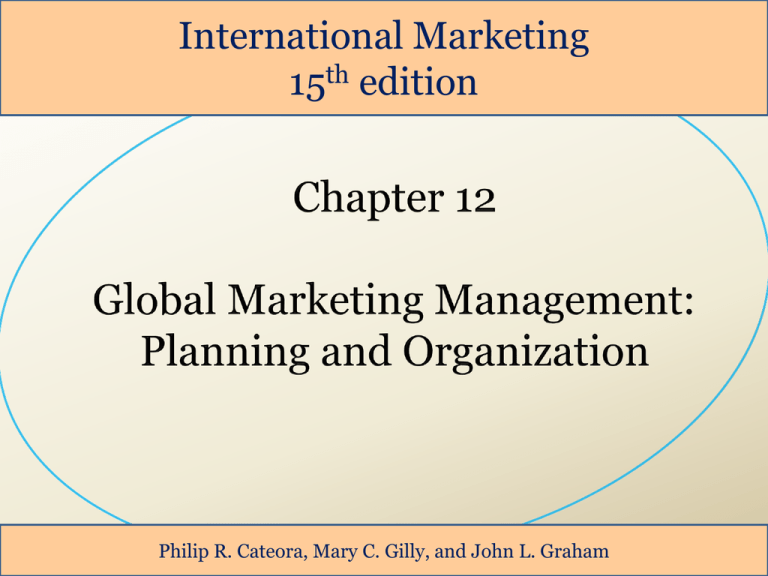
International Marketing 15th edition Philip R. Cateora, Mary C. Gilly, and John L. Graham Global Marketing Management 12 • The trend back toward localization – Caused by the new efficiencies of customization – Made possible by the Internet – Increasingly flexible manufacturing processes • From the marketing perspective customization is always best • Global markets continue to homogenize and diversify simultaneously – Best companies will avoid trap of focusing on country as the primary segmentation variable Roy Philip 2 Benefits of Global Marketing 12 • When large market segments can be identified – Economies of scale in production and marketing – Important competitive advantages for global companies • Transfer of experience and know-how – Across countries through improved coordination and integration of marketing activities • Marketing globally – Ensures that marketers have access to the toughest customers – Market diversity carries with it additional financial benefits – Firms are able to take advantage of changing financial circumstances Roy Philip 3 International Planning Process 12 Exhibit 12.1 Roy Philip 4 Alternative Market-Entry Strategies (1 of 2) 12 • An entry strategy into international market should reflect on analysis – Market characteristics • Potential sales • Strategic importance • Strengths of local resources • Cultural differences • Country restrictions – Company capabilities and characteristics • Degree of near-market knowledge • Marketing involvement • Management commitment Roy Philip 5 Alternative Market-Entry Strategies 12 Exhibit 12.2 Roy Philip 6 Alternative Market-Entry Strategies (2 of 2) 12 • Companies most often begin with modest export involvement • A company has four different modes of foreign market entry – – – – Exporting Contractual agreements Strategic international alliances Direct foreign investments Roy Philip 7 Contractual Agreement (1 of 2) 12 • Contractual agreements – Long-term, – Nonequity association between a company and another in a foreign market • Licensing – A means of establishing a foothold in foreign markets without large capital outlays – A favorite strategy for small and medium-sized companies – Legitimate means of capitalizing on intellectual property in a foreign market Roy Philip 8 Contractual Agreement (2 of 2) 12 • Franchising – Franchiser provides a standard package of products, systems, and management services – Franchise provides market knowledge, capital, and personal involvement in management – Expected to be the fastest-growing market-entry strategy • Two types of franchise agreements – Master franchise • Gives the franchisee the rights to a specific area with the authority to sell or establish subfranchises – Licensing Roy Philip 9 Strategic International Alliances 12 • Four characteristics define joint ventures: – JVs are established, separate, legal entities – The acknowledged intent by the partners to share in the management of the JV – There are partnerships between legally incorporated entities such as companies, chartered organizations, or governments, and not between individuals – Equity positions are held by each of the partners Roy Philip 10 Strategic International Alliances 12 • Consortia – Similar to joint ventures and could be classified as such except for two unique characteristics • Typically involve a large number of participants • Frequently operate in a country or market in which none of the participants is currently active – Consortia are developed to pool financial and managerial resources and to lessen risks Roy Philip 11 Direct Foreign Investment 12 • Factors that influence the structure and performance of direct investments – Timing – The growing complexity and contingencies of contracts – Transaction cost structures – Technology transfer – Degree of product differentiation – The previous experiences and cultural diversity of acquired firms – Advertising and reputation barriers Roy Philip 12
